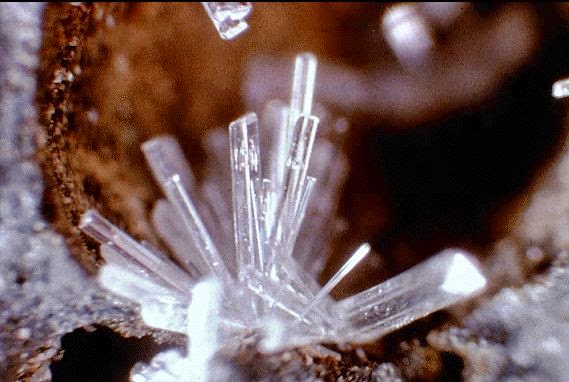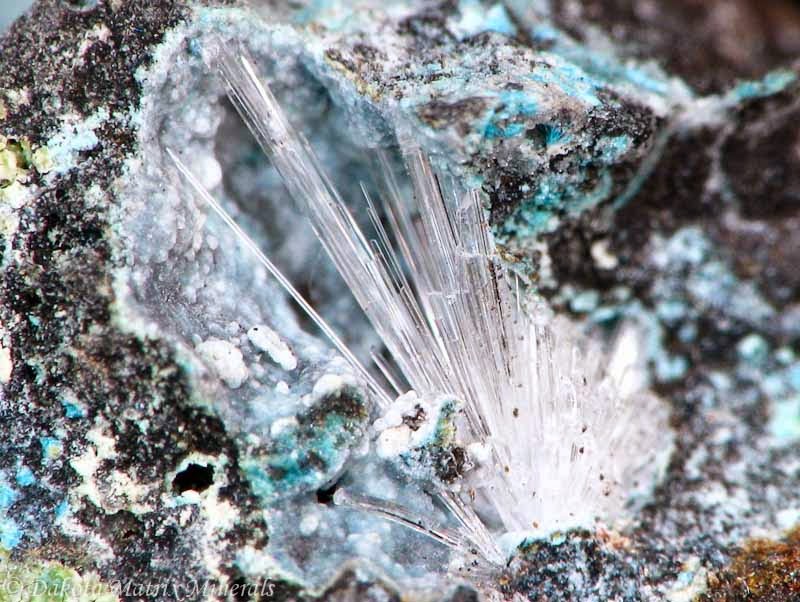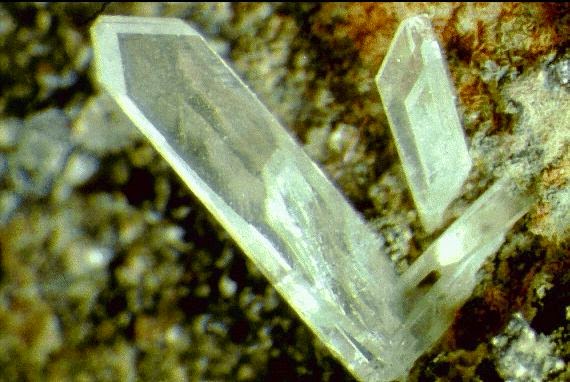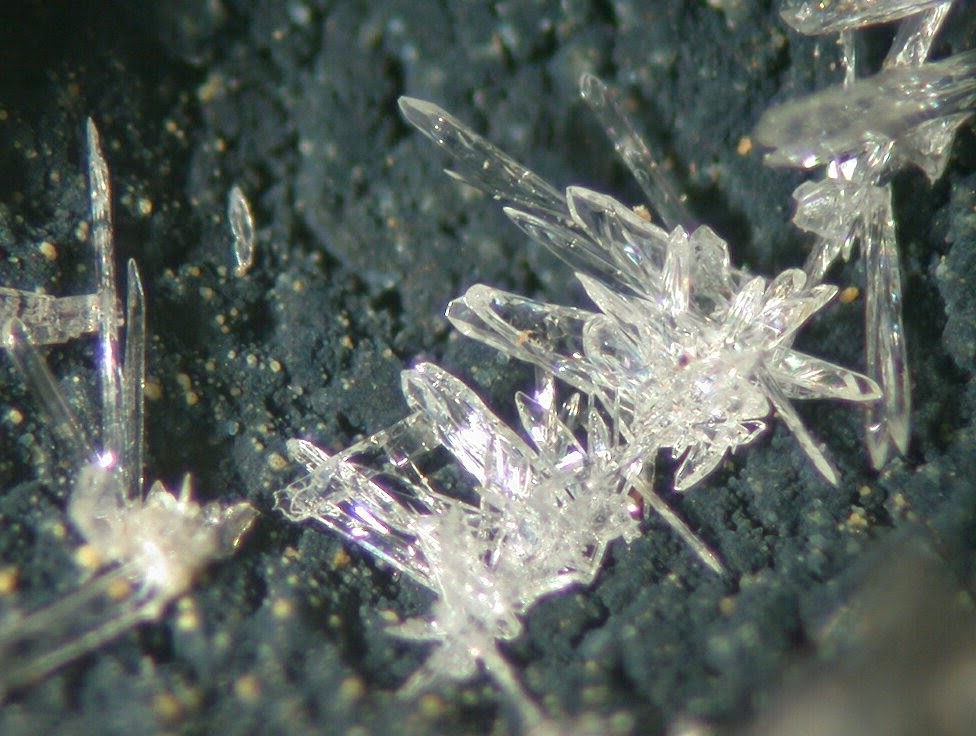
Chemical Formula: PbCl(OH)
Locality: Ancient lead slags at Laurium, Greece.
Name Origin: Named after its locality.
Laurionite (PbCl(OH)) is a lead halide mineral. It forms colorless to white crystals in the orthorhombic crystal system and is dimorphous with paralaurionite, both members of the matlockite group.
It was first described in 1887 for an occurrence in the Laurium District, Attica, Greece and named after the town Laurium. It occurs as an oxidation product in lead ore deposits, and is also produced on lead-bearing slag by reaction with saline solutions. It occurs associated with paralaurionite, penfieldite, fiedlerite, phosgenite, cerussite and anglesite.
History
Discovery date : 1887
Town of Origin : LAURION, ATTIQUE
Country of Origin : GRECE
Optical properties
Optical and misc. Properties : Transparent.
Refractive Index: from 2,07 to 2,15
Axial angle 2V: LARGE
Physical Properties
Cleavage: {010} Distinct
Color: Colorless, White.
Density: 6.24
Diaphaneity: Transparent.
Hardness: 2.5-3 – Finger Nail-Calcite
Luster: Adamantine – Pearly
Streak: white
Photos:













